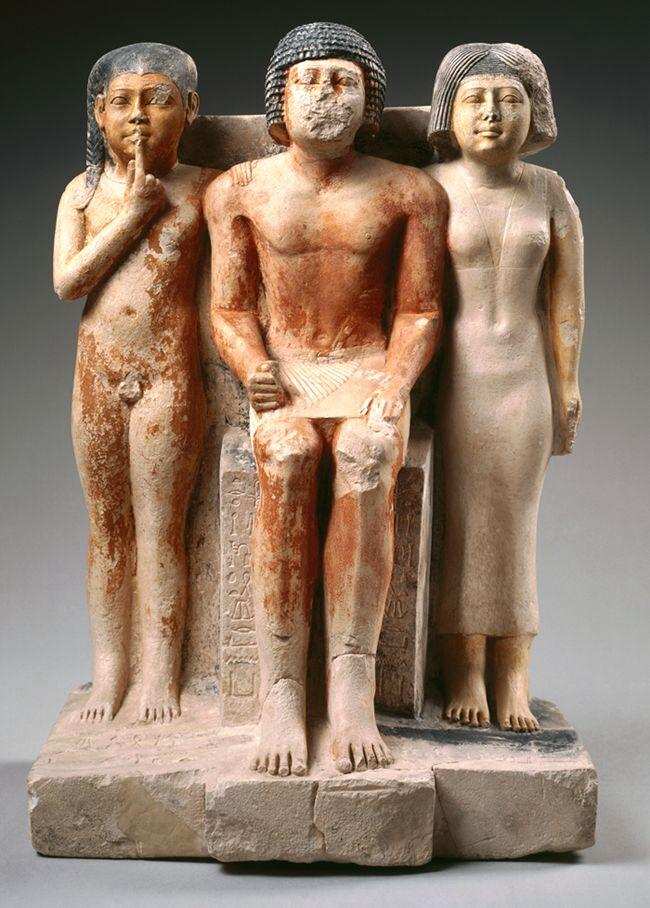
Figure 1.--This is a little limestone statuette of Nykara and his family. The provenance is not known. Scolars date it to the Old Kingdom, late Dynasty 5, circa 2455�2350 BC. Nykara was a scribe of the granary. He is seated between the standing figures of his son, Ankhmara, and his wife, Khuen-nub. Given his position and ability to affiord a family statuette suggests that he wa a man of influence and well-to-do. Ankhmara is naked, but given his father's social status, this was not a matter of poverty. He has a sidelock of hair, and the finger to mouth, as children were commonly depicted. He is shown as the same height as his mother. Here we have two theories. First, tThe boy was really very young, but the sculptor depicted him in a taller height for some reason, probably to show all three heads in a row. Second, the boy was older, but the sculptor depicted him as a little child to show that he was the son. This and other similar depictions suggest that during the Old Kingdom that boys commonly went naked until they reached puberty. Source: The finger to the mouth is frequent in ancient Egyptian images of little children. Many Egyptologists think that it is a representation of babies and toddlers putting a finger in the mouth, that was common when there were no pacifiers. It thus may be a more acurate age inducator than the size of the depiction. Brooklyn Museum). |

